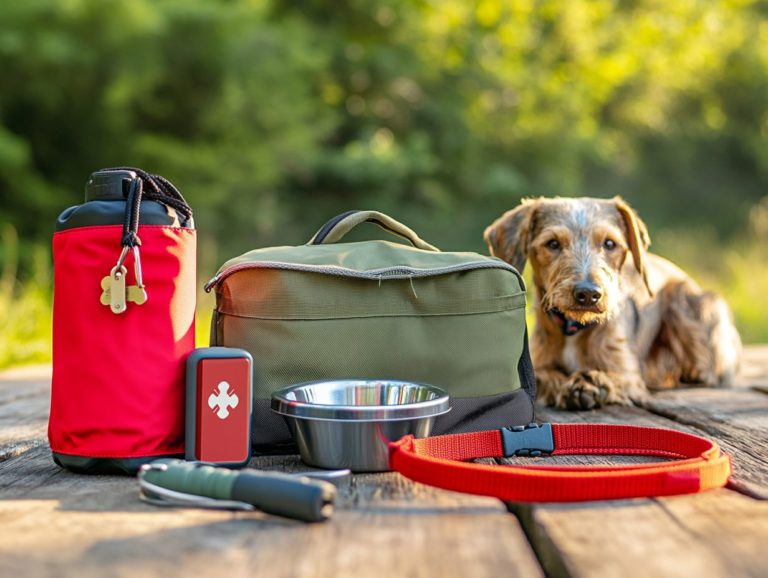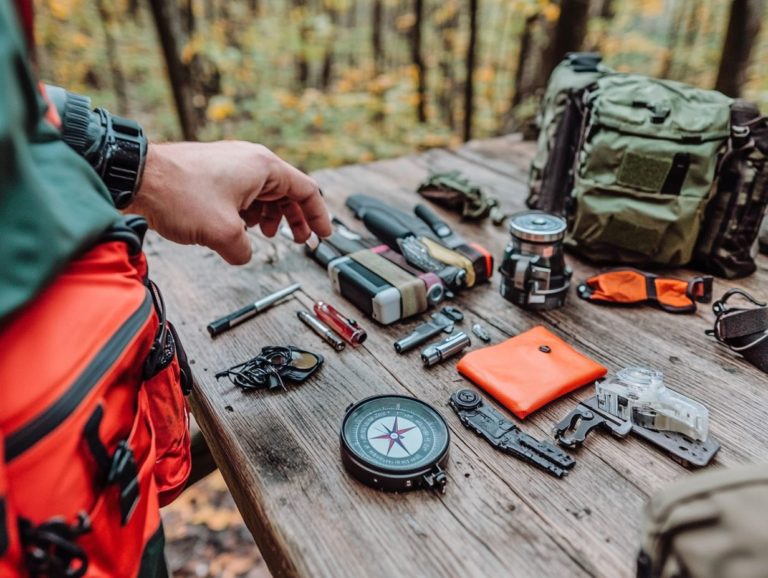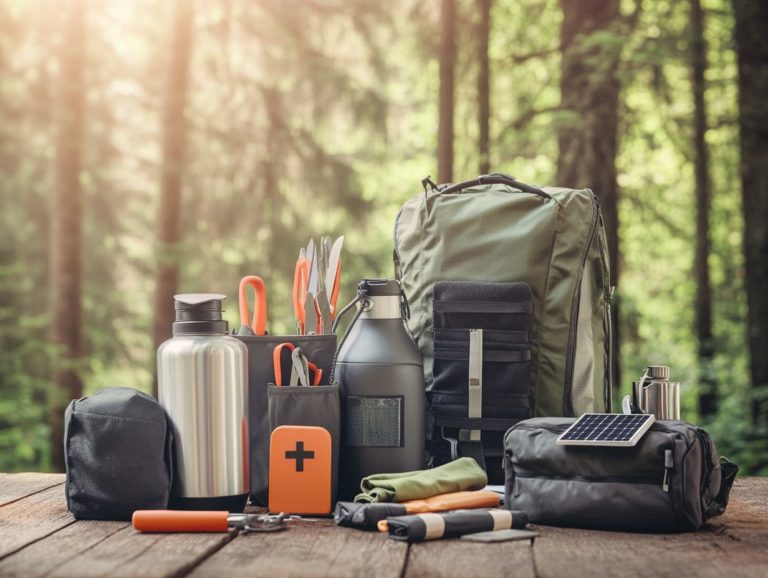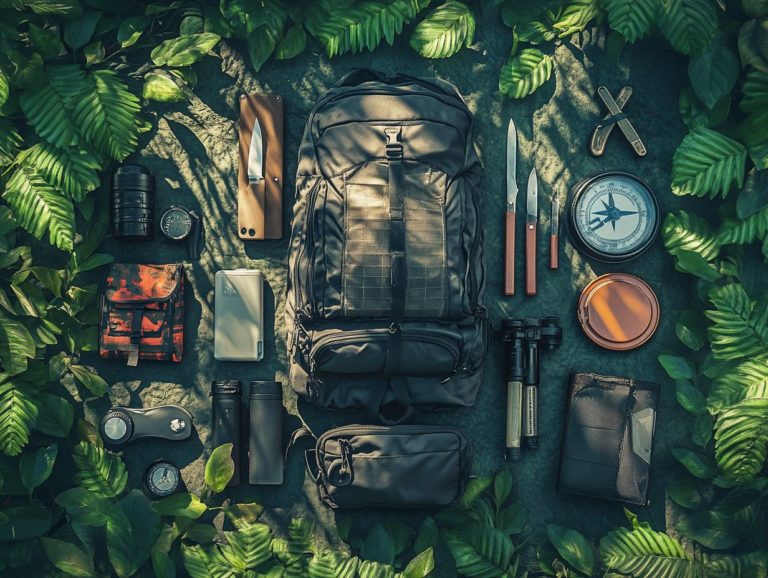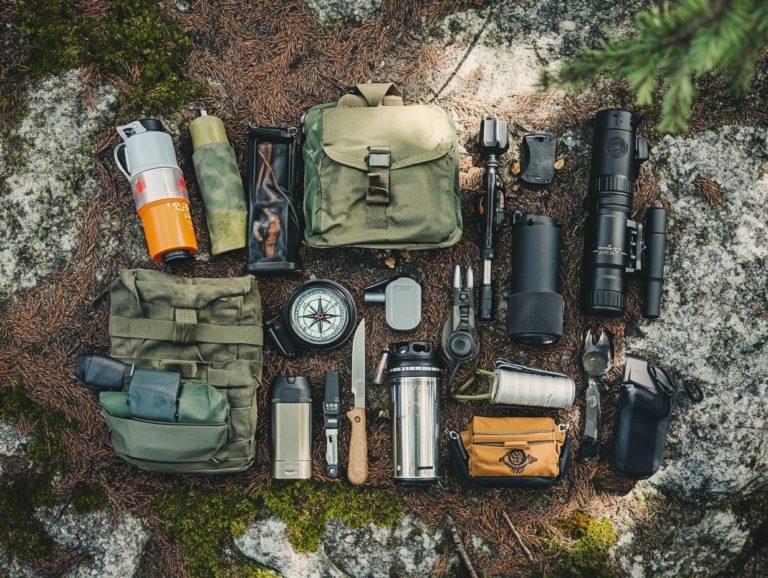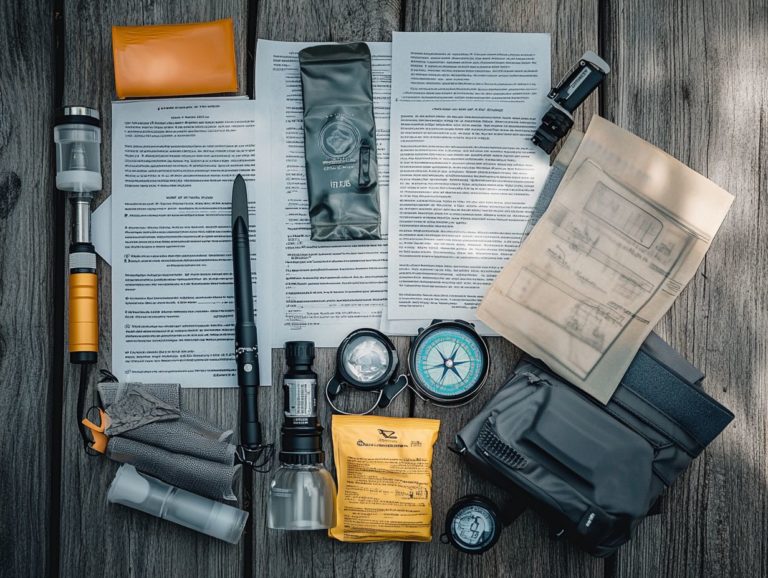How to Organize Your Survival Gear
In today s unpredictable world, being prepared for emergencies is more crucial than ever. Organizing your survival gear ensures that you have essential items readily available and simplifies access during a crisis.
This article delves into the significance of orderly gear storage, outlines the essential items for your survival kit, and presents effective strategies for maintaining your supplies. A handy checklist, along with tips for maximizing your space, will empower you to be ready for any scenario.
Dive in to discover how to create a well-organized survival setup that offers you peace of mind.
Contents
- Key Takeaways:
- Importance of Organizing Survival Gear
- Essential Gear for Survival
- Organizing Your Gear for Easy Access
- Creating a Checklist for Your Gear
- Maintaining and Updating Your Gear
- More Tips for Organizing Your Survival Gear
- Frequently Asked Questions
- How do I organize my survival gear for easy access?
- What are the essential items to include in my general survival gear?
- How should I store my survival gear to protect it from the elements?
- What is the best way to rotate and maintain my survival gear?
- How do I organize my gear for a bug out bag or emergency evacuation?
- What should I do if my survival gear is too bulky to carry with me?
Key Takeaways:
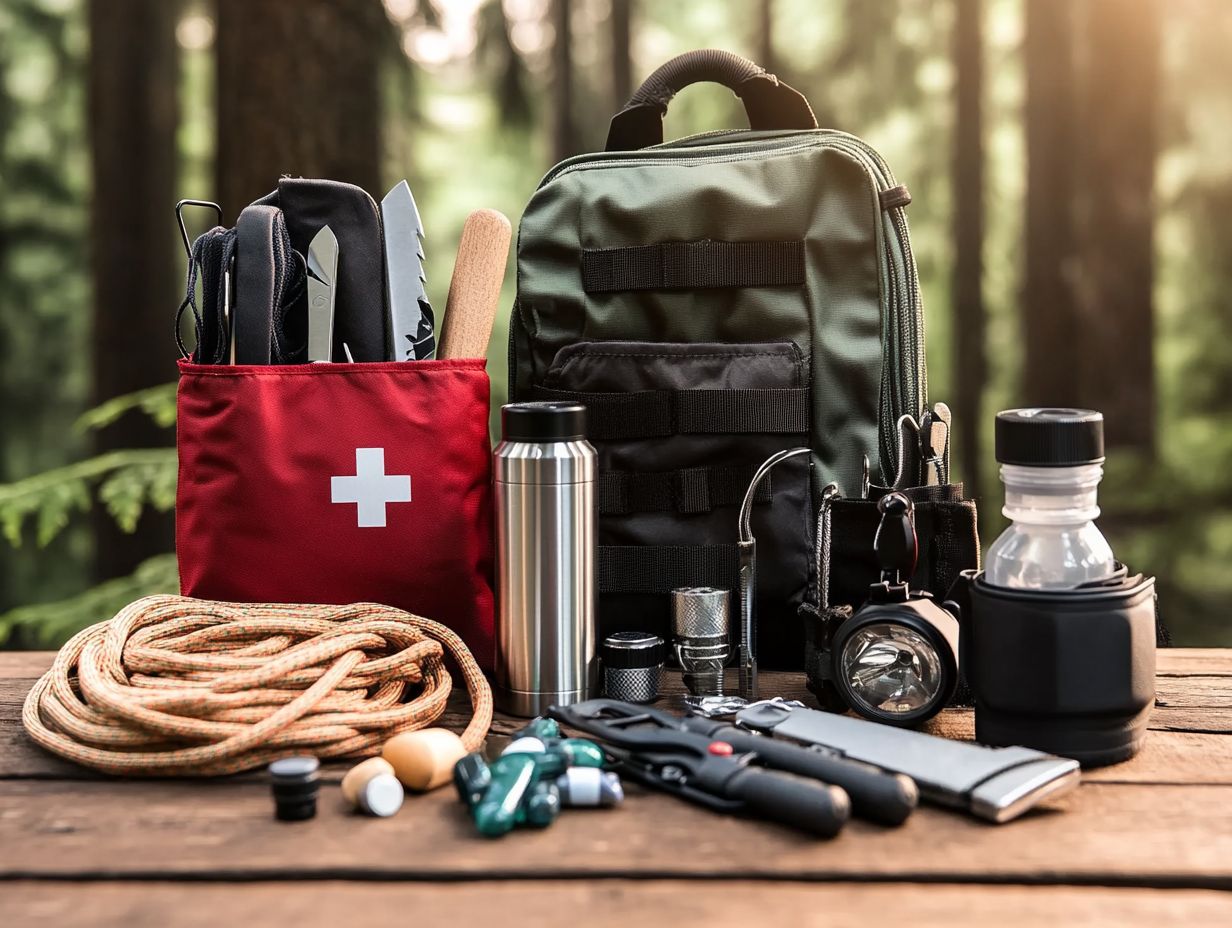
- Having well-organized survival gear is crucial for emergency preparedness.
- Include essential items in your survival kit, such as food, water, first aid, and multi-purpose tools.
- Efficient storage strategies and creating a checklist help you easily access and maintain your survival gear.
Importance of Organizing Survival Gear
Organizing your survival gear is a must for effective readiness in emergencies. This allows you and your loved ones to swiftly access disaster supplies when chaos descends. A well-structured system can dramatically reduce how quickly you can react, ensuring that vital items like water purification devices, first aid kits, and emergency food are at your fingertips.
Your well-organized survival closet can be a lifesaver! It not only alleviates stress during crises but also enhances the effectiveness of your emergency preparations by categorizing supplies for seamless access.
Why it Matters for Emergency Preparedness
Proper organization of your emergency preparations allows for quick access to vital resources like first aid supplies and food during a disaster.
When a crisis strikes, the frantic atmosphere often clouds judgment, making a dedicated survival closet invaluable. A meticulously arranged storage space designed to house essential items such as water, flashlights, and emergency blankets can significantly enhance your response times. For those looking to be well-prepared, understanding different types of survival gear is crucial. Every second matters, and knowing exactly where to find what you need enables you to react swiftly instead of wasting precious moments searching.
An organized emergency kit saves lives and builds confidence, allowing you to concentrate on safety measures and community support rather than scrambling for resources. Additionally, knowing how to select survival gear for kids can further enhance your family’s preparedness. Establishing this system is a proactive step that every household can take to ensure preparedness for unforeseen events.
Essential Gear for Survival
An effective survival kit should encompass essential gear tailored to a range of emergency situations, ensuring you’re well-prepared for any challenge that comes your way.
Key components to consider include:
- Emergency food supplies like Meals Ready to Eat (MREs) and energy bars,
- A comprehensive first aid kit,
- Versatile survival tools such as multitools, flashlights, and battery packs.
Include outdoor camping essentials like rain ponchos and solar chargers to significantly enhance your preparedness for a variety of scenarios. Additionally, learning how to train with your survival gear can be crucial for effective use in emergencies.
Must-Have Items for Any Survival Kit
A well-rounded survival kit should encompass essential items that elevate your preparedness to the next level. Think water purification systems, reliable energy sources like battery packs, and versatile tools such as a Swiss Army knife.
These components are not just nice to have; they are crucial during emergencies, offering critical support when access to everyday resources becomes compromised.
For example, a water purification system ensures you have access to clean drinking water an absolute necessity for survival. Reliable energy sources like battery packs enable you to recharge communication devices, keeping you connected with rescue services or loved ones when it matters most.
And let s not forget the Swiss Army knife. This versatile tool can tackle a multitude of tasks, from cutting ropes to opening cans, making it an incredibly practical addition to your kit.
Other important supplies, like flashlights, first aid kits, and durable candles, can illuminate your path and provide comfort in the darkest moments. Each item plays a vital role in ensuring you’re ready for whatever challenges may arise.
Don’t wait; start organizing your gear today!
Organizing Your Gear for Easy Access
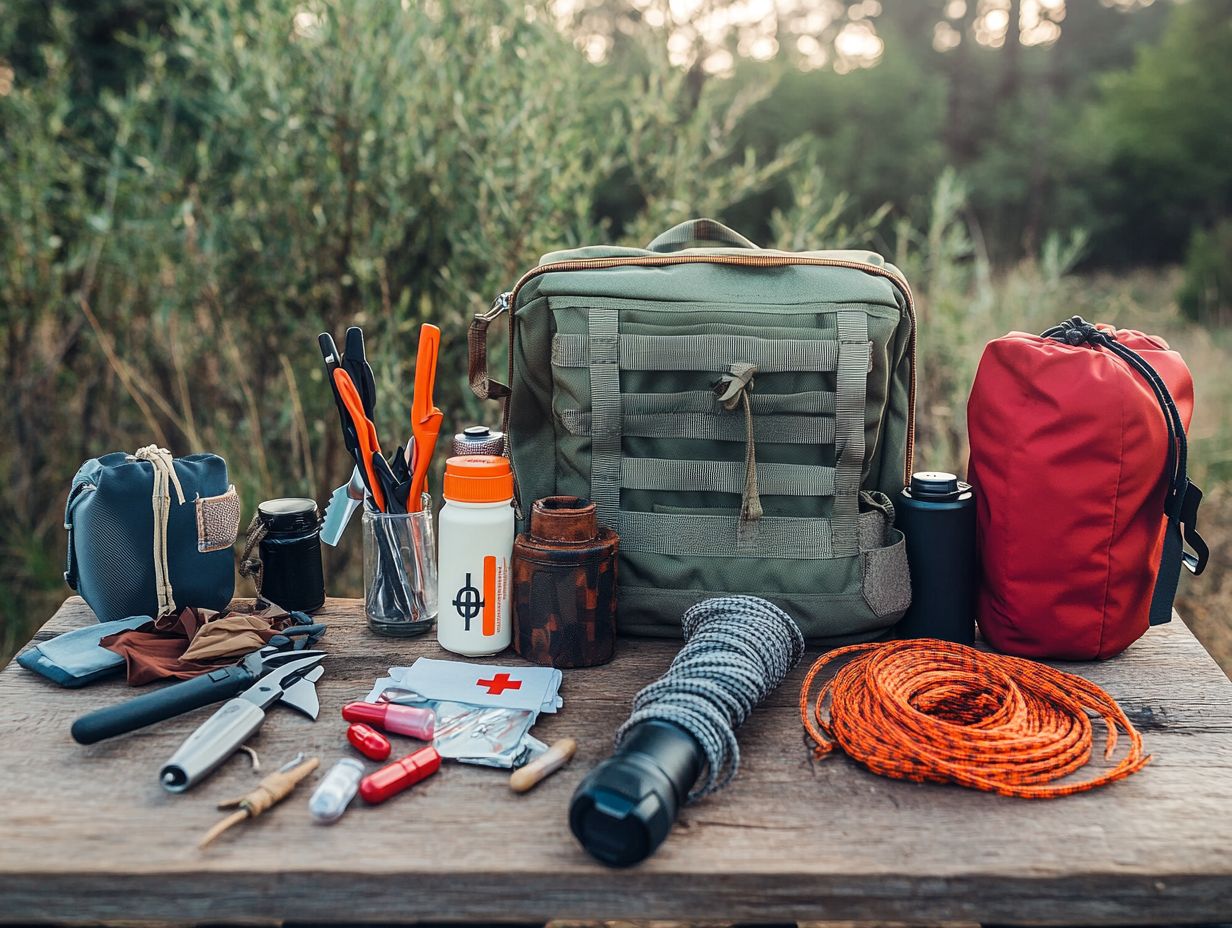
To make sure your survival gear is easily accessible during emergencies, it s crucial to organize your kit efficiently. By using storage bins and categorizing your supplies, you can significantly streamline the process. This enables you to locate what you need without wasting valuable time.
Establishing clear categories for your gear is vital. These can encompass everything from emergency light sources to first aid essentials and food supplies. This thoughtful organization not only enhances your readiness but also instills a sense of confidence in your preparedness, especially when you understand the importance of survival gear.
Strategies for Efficient Storage
Implementing effective strategies for efficient storage can significantly enhance your ability to organize emergency supplies and gear for swift access.
One of the most vital aspects is using your space wisely. Leverage vertical storage options, such as shelves or wall-mounted racks. By categorizing items like separating energy sources such as batteries or solar chargers from outdoor camping gear like tents and cooking equipment, you can elevate your organizational game. Additionally, knowing how to use hiking gear for survival can further enhance your preparedness.
Consider utilizing clear bins or labeled containers to streamline the process of locating essential items. This is especially important during emergencies. Investing in modular storage solutions offers flexibility to adapt to your evolving needs. You can neatly organize first-aid kits or store emergency food supplies with ease, and for those preparing for outdoor situations, knowing the top features to look for in survival gear can be invaluable.
Creating a Checklist for Your Gear
Get ready for anything by crafting your gear checklist now! Make sure your checklist includes these vital categories:
- first aid supplies
- outdoor camping equipment
- emergency food items like energy bars
By regularly updating this list, you will enhance your preparedness and quickly identify any items that may be lacking.
What to Include and How to Use It
An effective emergency supplies checklist should encompass a range of essential items, including a first aid kit, water purification tools, and MREs (Meals Ready-to-Eat).
These components are crucial for ensuring your safety and survivability during unexpected situations. A well-stocked first aid kit is invaluable for addressing minor injuries or medical emergencies, providing immediate relief and potentially saving lives.
Water purification tools are also important, as clean drinking water can be hard to find during emergencies. You can use methods like filtering or adding chemicals to make unsafe water drinkable.
MREs present convenient, nutritious options that require no cooking and boast a long shelf life. Multifunctional tools can assist with various tasks, whether it s opening packaged goods or making repairs. This enhances your preparedness for diverse scenarios.
By prioritizing these items, you can navigate emergencies with greater confidence and efficiency.
Maintaining and Updating Your Gear
You must regularly maintain and update your emergency supplies to stay prepared! This means diligently checking expiration dates on food and first aid supplies, replacing any worn-out items, and reorganizing your supplies for optimal accessibility.
By keeping your gear in prime condition, you not only enhance its reliability but also ensure that you are always prepared for any crisis that may arise.
Tips for Regular Maintenance and Replacement
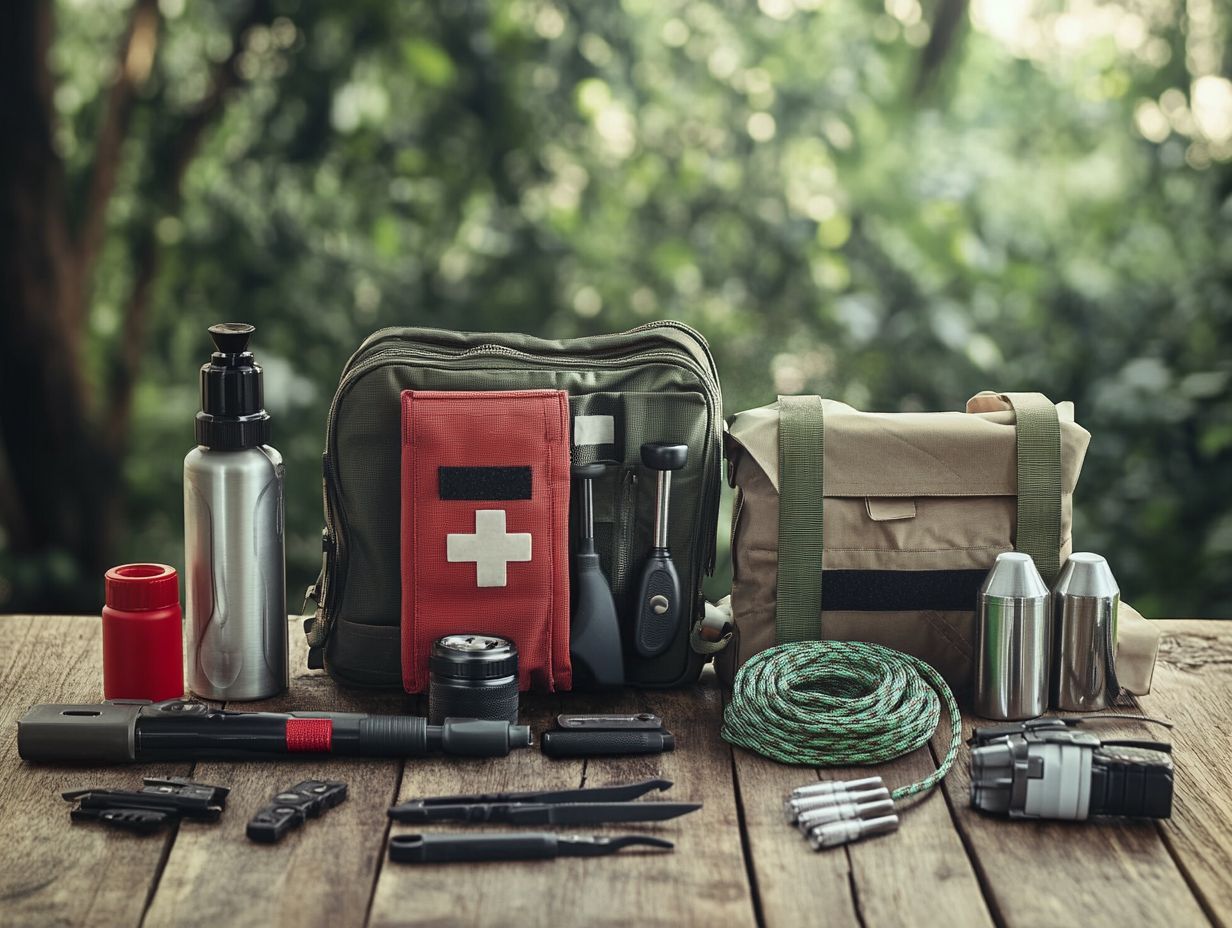
To maintain your gear in peak condition, prioritize regular maintenance and the timely replacement of essential items in your emergency preparations. Don t wait for a crisis to check your gear! Regular maintenance is key.
This means not just inspecting your equipment for signs of wear and tear, but also ensuring that supplies like first aid kits and long-lasting food are current. Make it a habit to frequently check expiration dates; outdated supplies could seriously undermine your preparedness efforts during a crisis. Additionally, knowing how to use survival gear in emergency situations is crucial for effective response.
Consider conducting a seasonal review of your stored gear, reorganizing, discarding unnecessary items, and replacing them with fresh, high-quality alternatives. Additionally, knowing what to include in your survival gear kit can help enhance your readiness and bolster your confidence, knowing that you have dependable items at your disposal when they matter most.
More Tips for Organizing Your Survival Gear
Maximizing space in your survival closet is crucial for effectively organizing your disaster supplies, ensuring you have quick access to your emergency gear when it counts the most.
By using shelves and hooks, along with clear labeling, you can significantly elevate the organization of your supplies.
Categorizing your items will make your preparedness efforts easier, making the entire process more efficient and less daunting.
Maximizing Space and Preparing for Different Scenarios
Preparing for various scenarios requires you to devise creative storage solutions and gain a thorough understanding of your emergency supplies, enabling you to maximize the space in your survival closet.
By systematically organizing these essentials, you’ll find it easy to access items during stressful moments. Utilizing storage bins to categorize first-aid kits, long-lasting foods, and camping gear properly not only optimizes space but also fosters a sense of preparedness.
Investing in quality camping gear gives you the tools you’ll need for any situation! From durable flashlights and emergency lights to portable cooking solutions, having these items readily accessible ensures you’re prepared for unexpected events and can act swiftly when the moment calls for it.
Frequently Asked Questions
How do I organize my survival gear for easy access?
The best way to organize your gear is to group them into categories and store them in clearly labeled containers or bags. This will make it easier to find what you need quickly.
What are the essential items to include in my general survival gear?
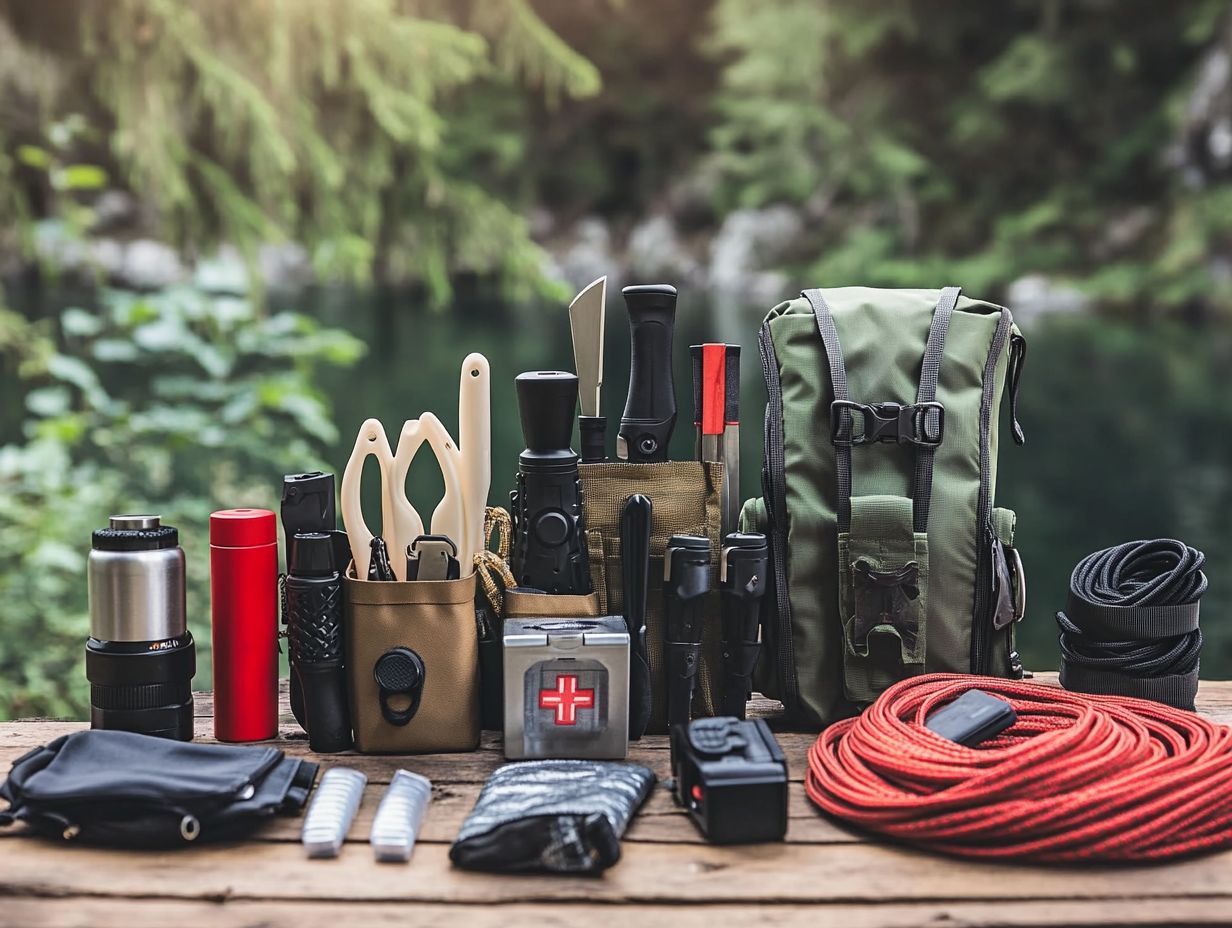
Some essential items to include are a first aid kit, water purification system, fire-starting tools, shelter, and emergency kit food. It’s important to prioritize the items that are necessary for your specific survival situation.
How should I store my survival gear to protect it from the elements?
You should store your gear in waterproof, airtight containers or bags to protect them from moisture and other environmental factors. Consider using a waterproof backpack or dry bags for your most important gear, including energy sources like energy bars and battery packs.
What is the best way to rotate and maintain my survival gear?
Regularly check and rotate your gear, especially items with expiration dates like food and medication. Make a checklist and schedule to keep track of when to replace and restock items.
How do I organize my gear for a bug out bag or emergency evacuation?
For a bug out bag or emergency evacuation, prioritize essential items such as a Swiss Army knife and LifeStraw Mission, and pack them in a way that makes sense for easy access. Consider using smaller containers or bags within your bag to keep items organized and easily identifiable.
What should I do if my survival gear is too bulky to carry with me?
If your gear is too bulky to carry with you, consider creating a separate cache or storage location for it in your designated survival area, where you may also store waterBOBs or extra candles. Make sure this location is secure and easily accessible in case of an emergency.

